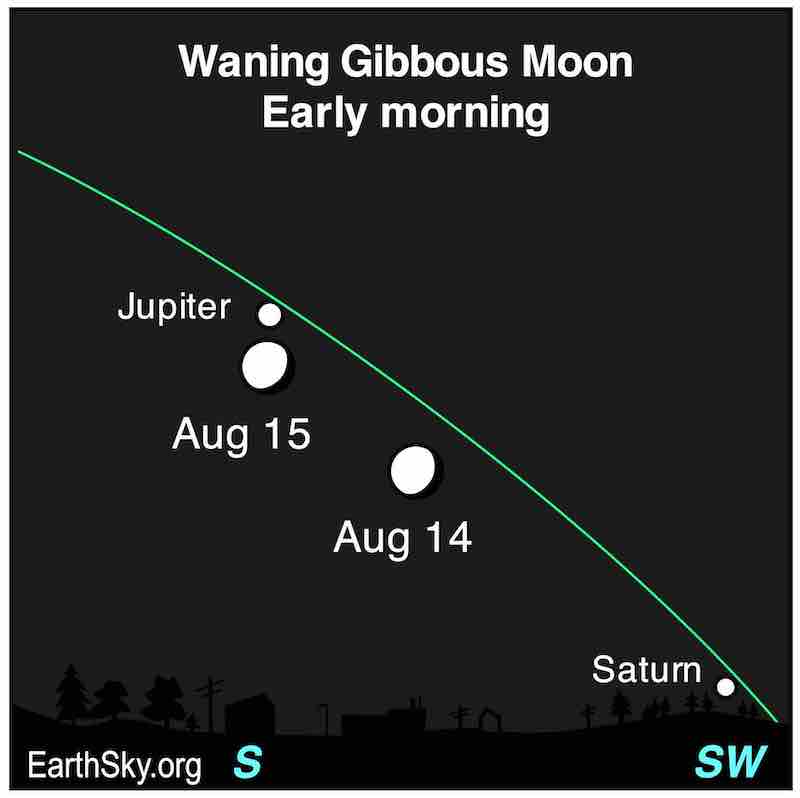
Moon near Jupiter on August 14 and 15 mornings
A bright waning gibbous moon will be close to Jupiter in late evening on August 13 and 14, 2022. Or look for them on the mornings of August 14 and 15. The moon will pass two degrees south of Jupiter on the morning of August 15.
Although Jupiter is in the constellation Cetus this month, its dim stars may be difficult to pick out in the moon’s glare. While Jupiter rises around midnight in early August, it appears above the eastern horizon around 9 pm local time toward the end of the month.
Obviously bright, Jupiter is shining around magnitude -2.7, with an apparent diameter of 48 arcseconds by month’s end.
Furthermore, Jupiter will be its best for 2022 from late August through mid-October. As a matter of fact, Jupiter reaches opposition on September 26, 2022.
Viewing Jupiter through a telescope
While viewing Jupiter with a small telescope, you can see some detail on the planet. The most obvious features are the light and dark equatorial bands running parallel across the planet’s disk. A larger telescope may reveal the Great Red Spot if it’s currently on the side facing Earth.
Additionally, small backyard telescopes or binoculars held steadily will also show you Jupiter’s four major moons, sometimes called the Galilean moons.
To find the position of Jupiter’s moons, click on this interactive tool via Skyandtelescope.com.
See 4 planets span the morning sky
Meanwhile, on August mornings you can see four planets spanning across the sky. In order from the sunrise direction, they are: Venus, Mars, Jupiter and Saturn. At the first of the month, they span around 144 degrees. And then toward the end of the month, they cover 173 degrees, almost from horizon to horizon!
For more great observing events in the coming weeks, visit EarthSky’s night sky guide
Bottom line: The waning gibbous moon is near Jupiter on the mornings of August 14 and 15, 2022. If you have binoculars, look for the Galilean moons visible as tiny dots around the gas giant planet.
The post Moon near Jupiter, August 14 and 15 mornings first appeared on EarthSky.
0 Commentaires